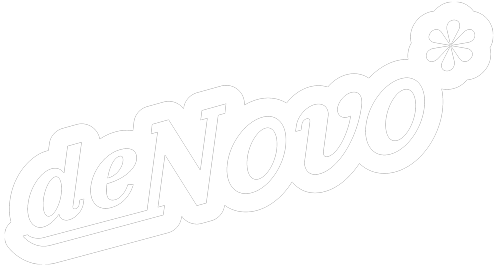A voyage through the internet’s inception, predictable human antics, and the rule of our most superior search engine.
The internet drives almost everything we do, both as businesses and as consumers. We communicate, share, educate, research, buy, sell, create and work online—but don’t forget that the World Wide Web is basically a 90s kid.
With over 1.7 billion websites in existence today—almost 200 million of which are active—there are a lot of brands and entities competing for consumer traffic, conversions and more. Luckily, as search engines have evolved to deliver exactly what users are searching for, they’ve created a somewhat level playing field for businesses in terms of Search Engine Optimization.
Search Engine Optimization (SEO) noun
The process of maximizing the number of visitors to a particular website by ensuring that the site appears high on the list of search results returned by a search engine, such as Google.Organizing the Internet
Of course, SEO wasn’t relevant until search engines emerged, which happened naturally as the number of websites continued to grow. The earliest forms of web browsers, like the original Yahoo, were just manually assembled catalogs of website links that were either generally useful or intentionally submitted by business owners.
The automation of search engines didn’t take long, with WebCrawler being the first to offer searching capabilities within webpage content. WebCrawler was a popular option but ultimately couldn’t keep up with demand. Over the years, many search engines took their shot, each sculpting the web searching experience a little more as they came and went.
An article by Forbes points out that throughout the rise and fall of these early search engines, business owners began to notice that their listings in these directories mattered, and they wanted better placements. Because money, duh! This sparked the idea of SEO in its earliest forms.
The Tasteless Art of Keyword Stuffing
Initially, SEO tactics were limited to keywords in website text, HTML tags and links. This led to businesses and advertising agencies boosting rankings with keyword stuffing, which is no longer an acceptable—or useful—approach.
Back then, if the owner of a hat shop wanted to rank higher than a competitor across town, they would simply add more hat-related keywords to their website, and voila! Outranked. However, the other hat shop owner could just up the ante by adding more, resulting in two terribly repetitive websites and a couple of Mad Hatters. *knee slap*
It didn’t take long for BackRub to enter the scene and change the way websites were cataloged. Thankfully, the founders also decided to change the company name one year later. They went with “Google.”

Google Takes the Stage
In 2000, Google—which was not yet the tech giant it is today—partnered with Yahoo, a larger web player looking for a company to power its organic search results. Therefore, every search result said, “Powered by Google,” giving the soon-to-be-colossal search engine a front-and-center role. While the exposure certainly helped, Google’s innovative algorithms are what put it on solid ground in the web world. BackRub, as it turns out, actually referenced the company’s work with website backlinks. Google began ranking websites based on popularity—which was measured by the number of inbound links from other reputable sites. The idea was to boost quality websites because if people are linking to them, they are obviously good, right? Naturally, the keyword stuffers were joined (or replaced) by link builders. To boost rankings, they would try to increase the number of backlinks to their site by asking for link exchanges. Some would even go as far as to build directories with the sole purpose of linking to their own sites. Basically, it was like the original “L4L” (“like for like”) that we see on Instagram today. Link for link?Google Florida
No, don’t literally Google “Florida.” Google Florida was the name of a major algorithm update released in late 2003—and one that rocked the world. Well, the world wide web, at least. Amidst all the shady link dealings, Google could no longer guarantee quality search results. Not wanting to have its own name tarnished, Google released the update to make it more difficult for companies to take these shortcuts. These overnight changes packed a lethal punch in the rankings, with some being removed from Google’s index entirely. And, in true Google fashion, the continued emergence of updates, new features, tweaked algorithms and more became the norm. In the time between Google Florida and now, Google rolled out a ton of things that have contributed to the search engine used by marketers and consumers today.Being Intentional About Audience Intentions
Today, Google rankings are based on about 200 different factors, many of which lead back to Google’s focus on end-user intent. Put simply, user intent is the reason someone makes a search online. Examples of intentions are:
- Information intent: looking for an answer to a specific question or information on a specific topic
- Navigational intent: looking to visit a specific website
- Transactional intent: looking to make a purchase
- Commercial investigation: looking to make a purchase in the near future
Algorithms can identify intent through search keywords. For instance, if someone searches “hats for sale,” the intent is probably transactional. If someone searches “Lids hats,” it’s probably navigational to find the Lids website. If someone searches “how to clean a hat,” the intent might be informational but could become commercially investigative/transactional in the case of a hat-cleaning product or service they didn’t know about.
Businesses can better cater to their audiences by classifying them into subgroups and segmenting content based on findings. Segments could include different intentions, like someone looking to purchase a hat versus someone looking to restore one. Segments could also be different preferences, like someone looking to purchase a newsboy hat versus someone looking to purchase a cowboy hat.
What Comes Next?
Content is Still King
Google’s Helpful Content Update (HCU) was unanimously predicted to have the greatest impact in 2023—an update that aims to reward human-created content and continues to deliver a better user experience. Experts speculate that HCU will best serve businesses that have always prioritized the creation of unique, engaging content for their audience. Brands that have not done this will likely need to focus on producing larger amounts of quality, original content to compete.The Upsurge of AI
AI applications continue to pop up in science, learning, technology, and entertainment industries and are expected to play an increasingly larger role in SEO. In 2015, Google released RankBrain, an AI system that helps Google sort and rank search queries and results. AI is an incredibly useful tool for Google and will likely emerge in additional ways in the next year. There is some buzz about how releases of new AI resources like OpenAI’s Generative Pre-trained Transformer (GPT) will mesh with existing SEO. With Google specifying its intention of rewarding “human-created” content, where does AI-generated content fall? For those unfamiliar with ChatGPT, it is a prototype chatbot that uses AI to generate responses to user prompts in a conversational way. Many are asking how this tool could transform the world with seemingly unlimited uses. Whether or not a tool like this will ultimately help or harm creators is currently just speculation, but it’s something to keep tabs on, nonetheless. In other news, we have it on good authority that ChatGPT recommends reaching out to de Novo to discuss your goals and how we can help you achieve them.
For legal reasons, we made this last part up. But it’s still good advice.
Curious about what we offer? Give us a shout—let’s talk about it!




